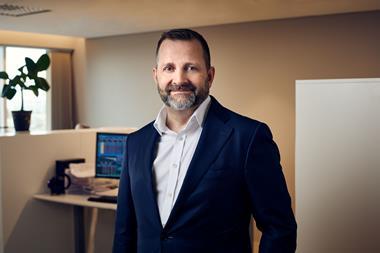Debbie Harrison examines why there is a demand for new investment approaches and structures for pension funds across Europe
Over the past decade, balanced and insured arrangements have disappointed many of Europe’s small to medium- sized pension funds. Pension experts argue that multi-manager structures – now more widely available to smaller schemes in the form of pooled products – provide a better solution to their investment requirements.
Although not infallible, the logic is certainly sound. Any asset management model that relies on certain managers, sectors and styles being in favour at any particular time is fundamentally flawed. Even with the most advanced risk modelling programmes, the providers are looking to the past to predict the future.
It can be argued that the investment and regulatory environment is ripe for a major shift to multi-manager structures across the entire pensions spectrum. This structure has been used for £1bn (e1.7bn)-plus schemes for many years but the rationale applies equally to the small institutional pension funds and to the retail market. Quite simply the investment needs of pension fund trustees and their members have changed.
Admittedly, quantitative and qualitative evidence shows that over time a good manager’s performance will come around, as will currently unpopular markets, sectors and styles. But time is something that many trustees and plan sponsors feel they do not have. As state schemes across Europe are eroded and private scheme members come to rely more heavily on their occupational pensions, trustees face increased responsibility for short to medium-term performance as well as long-term results.
It is one thing to identify a problem, quite another to implement a solution. Historically, for trustees dissatisfied with the performance of their fund, the decision to change a manager has been fraught with difficulties.
First, the transition costs are usually substantial, although with professional transition management these charges can be reduced significantly and performance maintained throughout the transition period. Second, experience demonstrates time and time again that there is a very strong likelihood that trustees will sack a manager whose performance is just about to improve, and hire a manager whose performance is poised to plummet. As the performance measurer, The WM Company, observes: “Real pain will set in for those funds which appoint a manager at the top of his cycle and remove a manager who then turns performance around.”
Should trustees decide to change a manager it is difficult to determine which alternative will provide a better outcome. The WM Company’s research indicates that there is little benefit in employing more than two ‘standard’ or balanced managers. Similarly, appointing managers who are highly correlated – that is, whose styles move in line with each other – only serves to add to the cost with no tangible benefit. The result of either of these moves, therefore, is added expense for no gain. In fact the risk of underperformance, when costs are taken into account, is increased.
For this reason, the development of multi-manager products for small to medium- sized pension schemes which hitherto have not had access to sophisticated strategies is of major significance to the growing private pensions markets in Europe.
The costs for multi-manager, multi-style vary depending on the asset class and number of managers but typically, for a £50m pension fund the overall cost for Frank Russell’s service would start at 60 basis points (0.6%). Clearly this is higher than a single manager, which might only cost 30–40 basis points. However, Russell argues that this represents good value considering that it secures access to 24 specialist managers, asset allocation and rebalancing.
The European Commission has signalled its intention to move pension funds towards prudent man principles of investment. These will be set out in the forthcoming draft pension fund directive later this year. As funds invest through a wider range of managers, good investment governance will require trustees to be able to demonstrate that they understand the level of risk to which they expose their fund and have in place an effective investment monitoring process.
For those responsible for the investment of the growing number of defined contribution (DC) schemes, there is an additional issue. Under a DC scheme there is no pooling of investment risk and no employer guarantee to make good the shortfall if performance flags and the fund cannot meet its liabilities. With DC, what you see is what you get. If members don’t like what they see, trustees are understandably worried that they themselves could be held responsible.
Given these concerns, what many trustees require is an asset management structure that reduces short-term volatility without a significant increase in costs and, preferably, without any additional administration on their part.
Multi-manager structures, including those offered by the growing number of ‘manager of managers’ – where the adviser actually implements the strategy – may represent the solution to some of these concerns.
As mentioned, these structures are not new but until recently most consultants have only offered a multi-manager option to their larger pension fund clients. This has left the bulk of Europe’s pension funds – which fall into the small to medium sized category – with a limited and unsatisfactory choice of either a balanced or insured arrangement.
While there are some excellent balanced fund managers and insured funds available, many schemes have been dissatisfied with the results. The problem of underperformance is compounded by the fact that performance measurement services in several European countries are often single number total return surveys providing little information on performance attribution.
Trustees are also expressing increasing concern over the inappropriate use of peer group asset allocation, which is an automatic component of most of these arrangements.
The dissatisfaction with traditional asset management models is, therefore, a major factor in the drive towards multi-manager models. The other driving force is the euro, which has increased the need for specialist Euro-zone managers. As consultant William M Mercer points out, those funds which are not proactive in seeking specialist managers will soon come to realise that by default they have become pan-European equity and Eurozone bond investors. As such, their requirements are unlikely to be fully met by their current domestic managers.
To make effective changes to asset management structures it is important to identify the existing problems with the scheme, its specific requirements, and to implement the new structure in an efficient manner.
An important contribution to the research into the problems and needs of small to medium sized schemes was a survey carried out by the Financial Times and the Westminster Business School. The survey examined UK trustee attitudes to their asset management responsibilities, and their satisfaction with their current consultant and managers.
Almost half of trustees (47%) said they were dissatisfied with the performance of their pension fund. Of these, there was a greater proportion of dissatisfaction among smaller schemes (£0–50m). Typically these trustees:
q Are likely to employ only one manager;
q Are unlikely to have changed their fund manager in the last five years;
q Do not receive reports from an investment monitoring service;
q Are looking for an improvement in the monitoring of their asset management arrangements, and
q In some cases would prefer an expert to implement the asset management strategy.
The application of more sophisticated multi- manager structures which are implemented efficiently, can help funds achieve:
q A level of risk which is fully understood and accepted by the trustees and is commensurate with the scheme’s statement of investment principles (Sip):
q A reduction in short-term volatility;
q A reduction in the time trustees have to spend on asset management issues; and
q Swift implementation of changes in the asset management structure.
This last point is critical. Not all underperformance is caused by poor investment management. Where the trustees do not have a good governance process in place the fund will suffer losses due, in particular, to delays in the appointment of new managers and poor transition management. These losses cannot be repaired with better asset management.














No comments yet